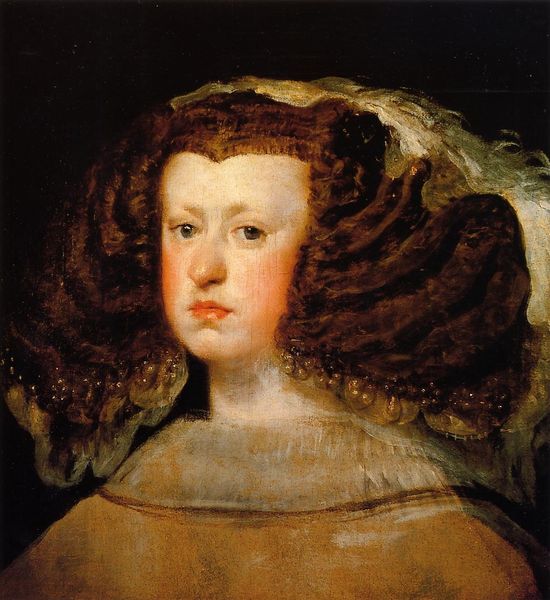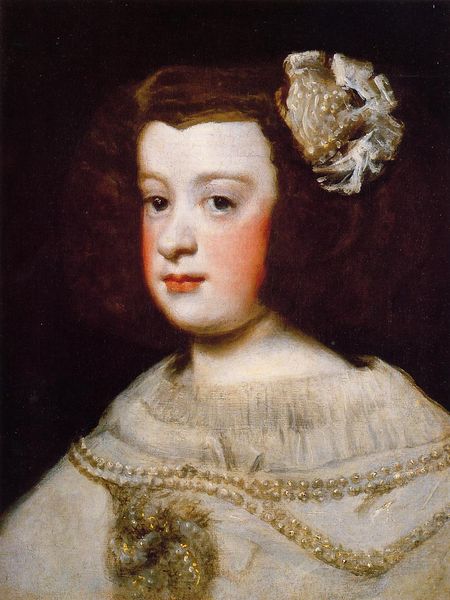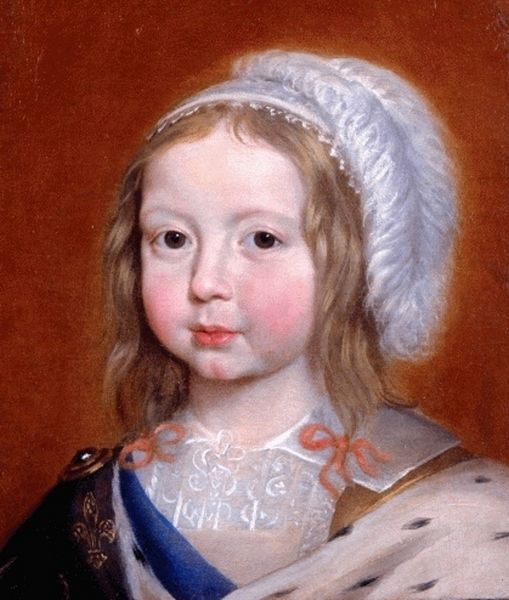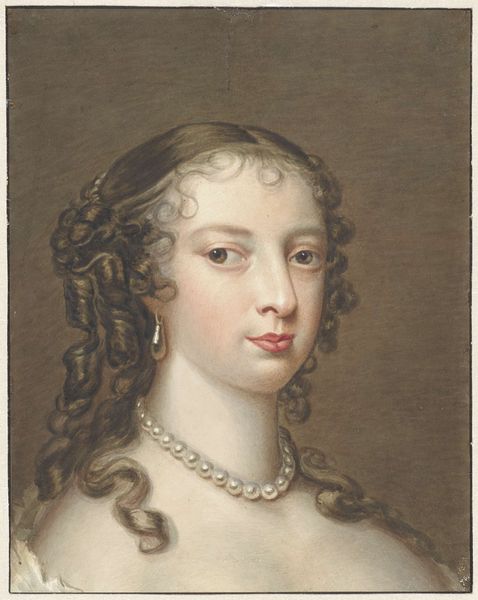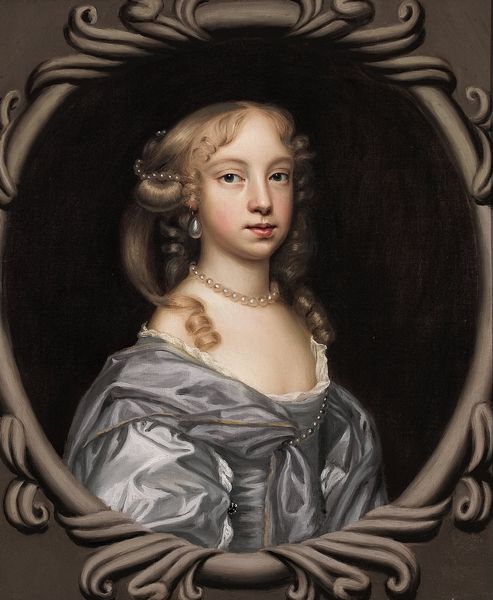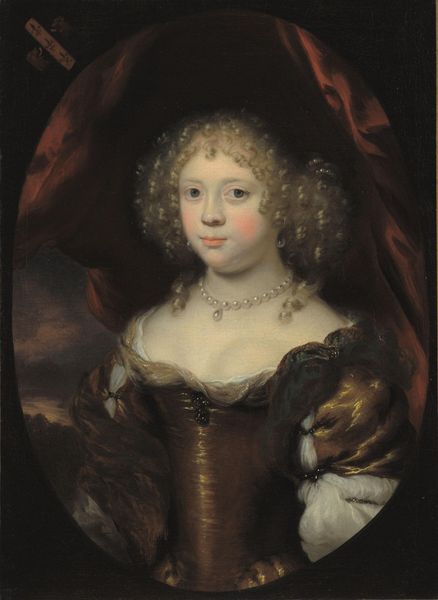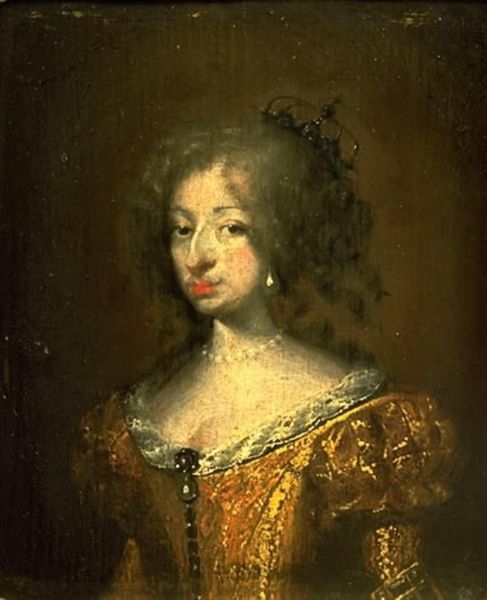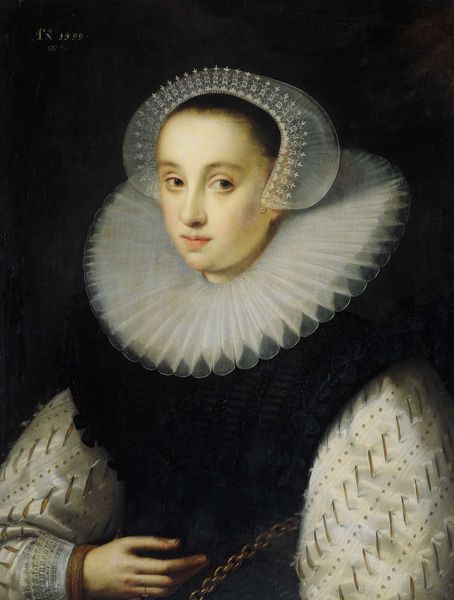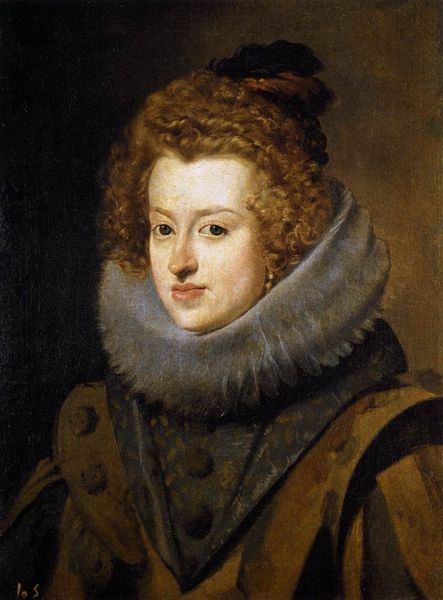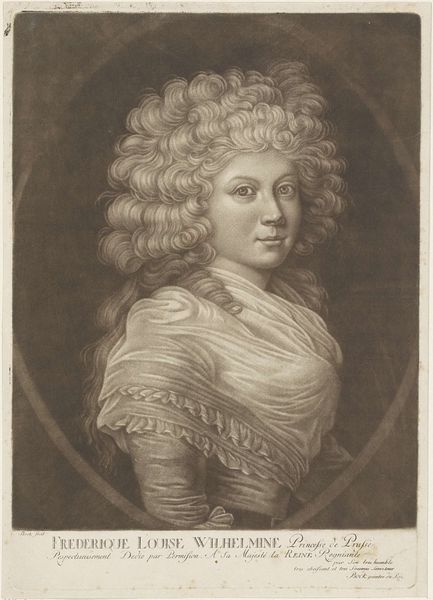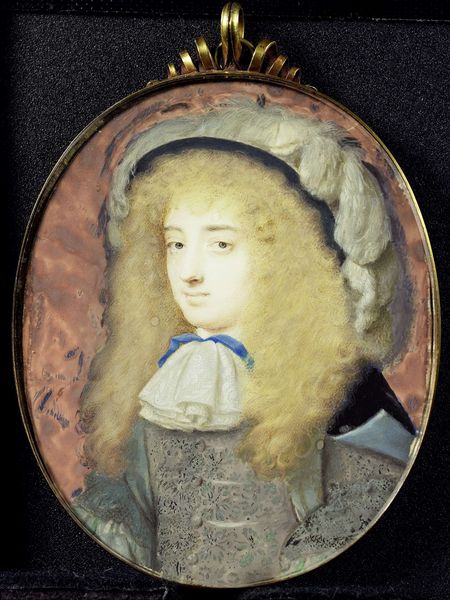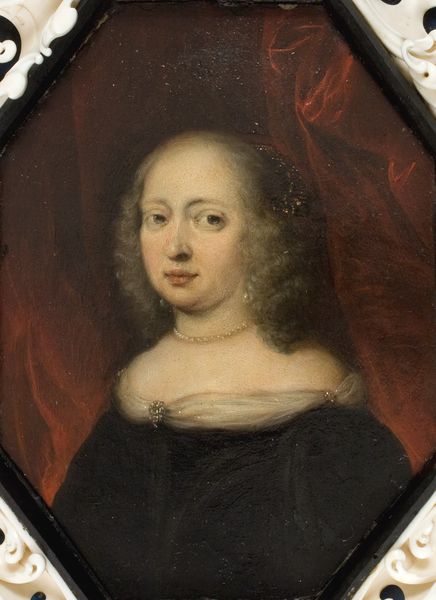
painting, oil-paint
#
portrait
#
figurative
#
character portrait
#
baroque
#
portrait image
#
painting
#
oil-paint
#
portrait reference
#
portrait head and shoulder
#
history-painting
#
facial portrait
#
portrait art
#
fine art portrait
Copyright: Public Domain: Artvee
Editor: This oil painting is entitled "María Teresa," dating from between 1651 and 1654, by Diego Velázquez. I’m struck by how the artist captures her youthful features and adornments. What's most significant to you when you look at this work? Curator: The undeniable element is the formal structure of the composition itself. Observe the contrast: a dark background, highlighting the pale skin of the sitter, her face a study in geometric planes. How does the application of light across these forms influence your interpretation? Editor: It almost feels like a spotlight is isolating her face. The background flattens while the detailing is reserved only for her features, her hair. Curator: Precisely. Now, consider the texture of her hair versus the smoothness of her skin. Note the sharp lines used to define the butterfly ornaments against the soft curves of her face. Do these variations contribute to the painting's overall meaning? Editor: They emphasize artifice and beauty. The butterflies feel very deliberate, placed to frame and highlight the portrait itself, almost creating a pattern. Curator: A pattern disrupting what? What expectations do the painter fulfil or frustrate by contrasting the overall flatness with the almost hyper-real details? Editor: I guess it calls attention to the artist’s choices—how he directs our gaze, almost turning a person into a symbol. This close reading made me realize the artistry in something I initially perceived as simply decorative. Curator: Yes, a fascinating exploration of how form and representation intermingle to create meaning.
Comments
No comments
Be the first to comment and join the conversation on the ultimate creative platform.
